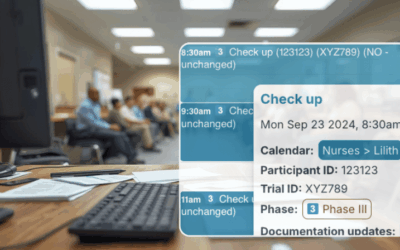As your business grows with a second location, an extra crew, or just more people to manage, the way you operate has to evolve, too. Putting together a simple schedule for a few team members is doable on a spreadsheet. But as things get more complicated, the old spreadsheet starts to drag. For streamlined scheduling and operations, you need a more flexible tool.
Why spreadsheets fail for complex schedules
Spreadsheets were never built for real-time collaboration at scale. As the team grows, so do the headaches. Every new person adds more rows, more color codes, more chance of error. Scrolling and filtering become a chore, and it’s all too easy to overlook a gap in the schedule or a double-booked team member.
A spreadsheet seems like it has structure. And it does, in a way: A grid of rows and columns. But it’s not a flexible structure. It’s tough (if not impossible) to layer in the scheduling factors and dependencies that become important. You can add another spreadsheet tab, but that still doesn’t bring everything together in one place.
How a scalable shared calendar solves it
A smarter approach: A single shared calendar built for groups, flexible enough to handle complexity without slowing down.
See what matters
Imagine working with a tool that displays each team member or resource as its own sub-calendar. Sub-calendars are color-coded, organized in folders, and instantly filterable. Plus, you can toggle which ones are in view. Need to see all the pieces? Toggle on all the sub-calendars and zoom the date range out. Need to focus on one team, shift, or project? Narrow down your view by adjusting the date range and hiding any calendars that aren’t relevant at the moment.
Set up customized access
You can control who sees what, so team members view only their own schedules without being overwhelmed by everyone else’s. And with real-time syncing across devices, any update from the office or field appears instantly for everyone.
And everyone can access the same real-time view from any device, so updates are easy and sync everywhere.
How to set it up
- Create sub-calendars for each team member, resource, or location.
Organize them in folders. - Color-code for clarity. Assign distinct colors to each sub-calendar so coverage and overlaps are obvious at a glance.
- Prevent conflicts. Configure each sub-calendar to automatically stop overlapping events.
- Find the right view. Move from Timeline to Table, Multi-day to Year, to see what’s relevant. Zoom in or out as the task demands.
- Toggle and filter. In the left sidebar, toggle sub-calendars on/off. Use the Filter field to sort by keyword or custom field.
- Share the right access. Add each team member as a user with customized access permissions set up precisely for their role.
- Stay synced with the Teamup app. Check the schedule anywhere.
Get a handle on complexity
You don’t have to wrestle with slow spreadsheets to keep your team organized. Switch to shared calendar that can scale with you. As your business expands, add more calendars to keep things organized. No hassle, no disruption, no new tabs or hidden errors. Just clear scheduling with visual layouts, secure access, and automatic syncing. Get started today.





